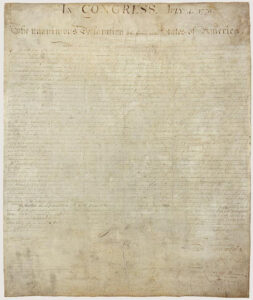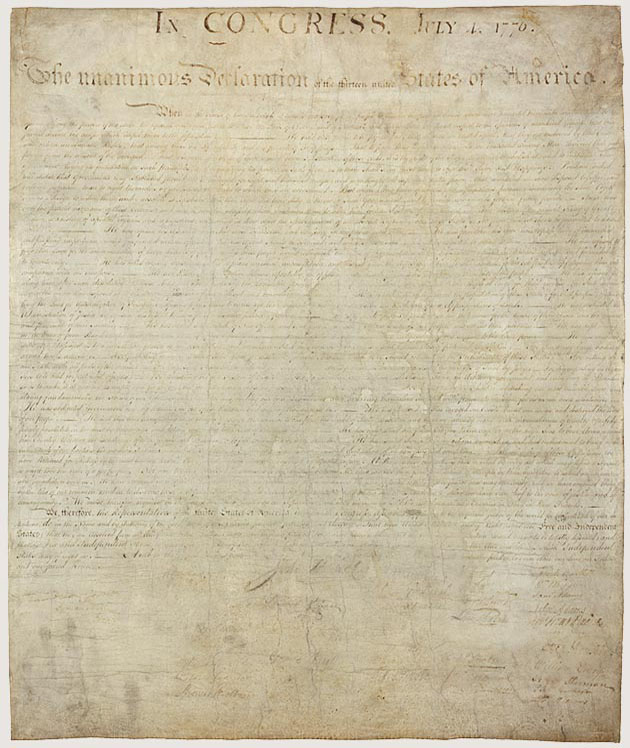
The National Archives and Records Administration (NARA) determined recently that America’s founding documents may be “harmful or difficult” for some users to view since they reflect “outdated, biased, offensive, and possibly violent views and opinions.”
In order to caution readers before they access digital copies of the offensive documents — which, of course, include the Declaration of Independence, the Constitution, and the Bill of Rights — NARA has plastered a “Harmful Language Alert” above its entire online catalog.
This is what it says:
NARA’s Statement on Potentially Harmful Content
The Catalog and web pages of the National Archives and Records Administration (NARA) provide access to many millions of descriptions and digital copies of the permanent records of the United States federal government.
The Catalog and web pages contain some content that may be harmful or difficult to view. NARA’s records span the history of the United States, and it is our charge to preserve and make available these historical records. As a result, some of the materials presented here may reflect outdated, biased, offensive, and possibly violent views and opinions. In addition, some of the materials may relate to violent or graphic events and are preserved for their historical significance.
The National Archives is committed to working with staff, communities, and peer institutions to assess and update descriptions that are harmful and to establish standards and policies to prevent future harmful language in staff-generated descriptions.
Frequently Asked Questions
What harmful or difficult content may be found in the National Archives Catalog and our web pages?
Some items may:
- reflect racist, sexist, ableist, misogynistic/misogynoir, and xenophobic opinions and attitudes;
- be discriminatory towards or exclude diverse views on sexuality, gender, religion, and more;
- include graphic content of historical events such as violent death, medical procedures, crime, wars/terrorist acts, natural disasters and more;
- demonstrate bias and exclusion in institutional collecting and digitization policies.
Why does the National Archives make potentially harmful content available?
NARA’s mission is to preserve and provide access to the permanent records of the federal government. NARA, working in conjunction with diverse communities, will seek to balance the preservation of this history with sensitivity to how these materials are presented to and perceived by users.
How is this material described, and why are some of the terms used in the descriptions harmful?
- Archivists choose what language to use when describing materials. Some of these descriptions were written many years ago, using language that was accepted at the time.
- Archivists often re-use language provided by creators or former owners of the material. This can provide important context, but it can also reflect biases and prejudices.
- Archivists often use a standardized set of terms, such as the Library of Congress Subject Headings, to describe materials. Some of these terms are outdated, offensive, or insensitive.
- In the past, the National Archives has not had standards or policies to help archivists avoid harmful language.
How are archivists working to address this problem and help users better understand such content?
Examples include:
- informing users about the presence and origin of harmful content;
- revising descriptions and standardized sets of descriptive terms, supplementing description with more respectful terms, or creating new standardized terms to describe materials;
- researching the problem, listening to users, experimenting with solutions, and sharing our findings with each other;
- evaluating existing processes for exclusionary practices or institutional bias that prioritize one culture and/or group over another;
- making an institutional commitment to diversity, equity, inclusion, and accessibility.

